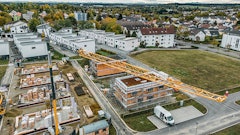
“An ounce of prevention is worth a pound of cure,” says the old saying.
Putting in the time to take care of hard-working rental equipment is essential to keeping the fleet ready to rent at all times. Because, without ready, reliable, and safe equipment, there simply is no rental business.
A successful preventative maintenance program takes place both pre- and post-rent, but a commitment to maintenance runs throughout an organization’s entire operation. At RDO Equipment Co., we have made preventative maintenance a priority and help our rental center partners do the same.
Based on our shared experiences, we developed two five-step checklists, along with a few process-related best practices to follow when a machine goes out and when it comes back in.
Pre-Rental: When a Machine Goes Out
A simple checklist is a great way to make sure all necessary tasks are completed. The best starting point for all maintenance is a machine’s operator’s manual, which will have a detailed checklist and specifics to the machine. In general terms, a basic, priming checklist has five steps:
- Check and fill fluids including fuel, oil, and hydraulic fluid
- Grease crucial points and do a quick touch-up if needed
- Sharpen blades, knives, or teeth. If applicable, check knives/shear-bar, mounting hardware, and replace teeth as necessary
- Set the correct adjustments. This includes making machine-specific adjustments or when adding attachments
- Clean the machine or do a quick wipe down, and remove excess debris
Upon meeting with the customer, whether at the rental yard or delivering the machine to a jobsite, do a machine walkaround and take detailed photos of its condition. These pre-rental photos can come in handy down the road when the customer returns the machine.
Post-Rental: When a Machine Comes In
Whether a machine was rented for a few hours or a few weeks, all equipment should go through a standard return process—first, to assess its condition, and second, to give it much-needed TLC.
When a machine comes in, a good practice is to repeat the machine walkaround process that was conducted with the customer prior to the rental. This is a prime time to inspect the machine’s condition and assess any damage or issues, and where those pre-rental photos can be crucial. If there is damage that a renter disputes was there prior to him/her using the machine, photos can show who is liable for repair costs.
Moving into the actual maintenance portion of the return process, it is again a good idea to consult the machine’s operator’s manual. It will have suggestions specific to each machine, but here is a general maintenance checklist with five basic steps:
- Clean the machine, remove dirt and debris, wash down, and wash wheels, if applicable
- Grease crucial points. A machine is more receptive to grease when it has just cooled down to a safe temperature after it has been working rather than after sitting idle
- Wipe excess grease from and around grease-to-flush cavities
- Check fluids, change oil, or fill fuel or hydraulic fluid if needed. Be aware of service intervals and use the correct spec fluid(s)
- Inspect the engine air filter, and clean or change it if needed and indicated by the filter minder or service interval
It is tempting to put away the machine as-is and hold off on these maintenance steps. After all, the machine needs to go through the pre-rental checklist then anyway, so why double up the effort? By taking care of maintenance now, the machine can get back out on rent – and bringing in revenue – quickly when the demand arises.
Note the similarities with the pre-rental checklist, like points 2 and 4. If these are addressed upon return, those two steps can be quickly checked off the list when it's time for the machine to go back out on rent.

Another good reason to take care of maintenance immediately upon return is it offers another opportunity to closely inspect the machine for any damage incurred by the renter. When going through basic maintenance and checks, note any issues that were missed during the return walkaround. In the event something shows up, reach out to the customer ASAP to discuss the problem and next steps. If an issue is noticed a week or two later, there’s little chance to hold the renter accountable.
Additional Best Practices
1. Regularly consult the operator’s manual.
As noted earlier, every machine includes an operator’s manual. These guides are focused on the make and model of every machine and get very specific on everything from basic daily upkeep and longer hourly maintenance intervals, to best practices for safe operation and care.
2. Provide operational and safety training for every renter.
Operating the machine correctly and safely tends to lead to fewer maintenance needs and repair issues. Even those renters who have experience operating a machine should receive at least an overview of safety and best practices.
As an equipment dealership that also rents machines, RDO shares this outlook. The team offers free lifetime training to rental centers to ensure the staff knows proper and safe operation practices on equipment, which can then be passed onto the renter. Likewise, the RDO team trains rental staff on basic preventative maintenance.
3. Keep the relationship with the dealership strong.
A rental center’s relationship with their equipment dealership is one that deserves the same time and attention as the machines themselves. A good partner understands that the machine is a reflection on their business as much as the rental outlets and will work hard to ensure their team is invested and doing their part to provide the equipment and after-sale support needed.
Regular care and preventative maintenance of machines may sound like a heavy lift but doing it right will keep the equipment – and the business – running smoothly.



























